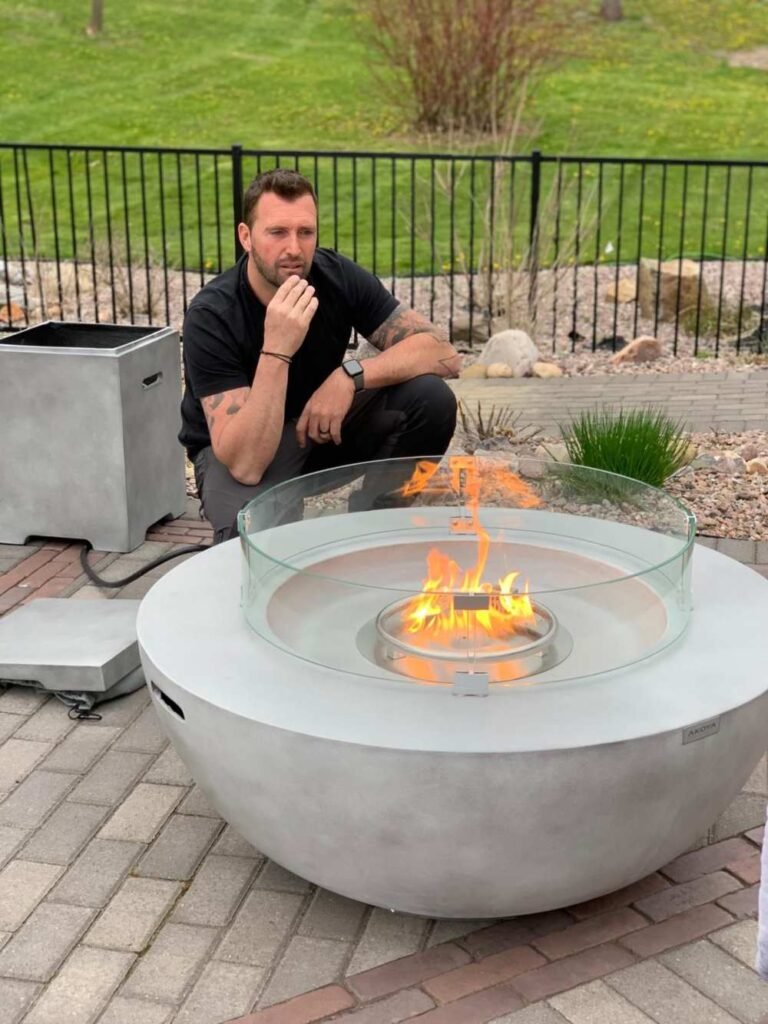Creating a well-designed outdoor living space enhances the beauty and functionality of your home, offering a perfect blend of comfort and utility. Outdoor living design encompasses a variety of spaces, including kitchens, living rooms, and entertainment areas. Each space requires thoughtful planning to maximize functionality and comfort. This guide explores different types of outdoor spaces and offers tips on designing them to create an inviting and practical outdoor environment.

Understanding Outdoor Living Spaces
Outdoor living spaces extend your home’s footprint, providing areas to cook, dine, relax, and entertain. Properly designed outdoor areas can increase your home’s value and improve your quality of life by offering more opportunities to enjoy the outdoors.
If you are looking for a professional in Outdoor Living Design in Syracuse, NY, we can help you with your project, contact us.
Types of Outdoor Living Spaces
- Outdoor Kitchens: Fully equipped cooking areas that allow you to prepare and enjoy meals outside.
- Outdoor Living Rooms: Comfortable seating areas designed for relaxation and socializing.
- Entertainment Areas: Spaces equipped for activities such as watching movies, playing games, or hosting parties.
Designing an Outdoor Kitchen
Key Elements of an Outdoor Kitchen
An outdoor kitchen should be both functional and aesthetically pleasing. Consider the following elements:
- Grill or Cooktop: Central to any outdoor kitchen, choose a high-quality grill or cooktop that suits your cooking style.
- Counter Space: Ample counter space for food preparation, serving, and dining is essential.
- Storage: Weather-resistant cabinets and drawers for storing utensils, cookware, and pantry items.
- Refrigeration: Outdoor refrigerators or coolers keep food and beverages at the right temperature.
- Sink: A sink with running water for easy cleaning and food prep.
Design Tips for Outdoor Kitchens
- Layout: Choose a layout that allows for efficient workflow. L-shaped, U-shaped, and island layouts are popular options.
- Materials: Use durable, weather-resistant materials like stainless steel, granite, and concrete.
- Lighting: Incorporate task lighting for cooking and ambient lighting for dining and socializing.
- Shelter: Add a pergola, canopy, or roof to protect the kitchen area from the elements.
Designing an Outdoor Living Room
Key Elements of an Outdoor Living Room
An outdoor living room should be an extension of your indoor living space, providing comfort and style. Consider the following elements:
- Seating: Comfortable and weather-resistant seating options such as sofas, chairs, and sectionals.
- Tables: Coffee tables, side tables, and dining tables for holding drinks, snacks, and decor.
- Rugs: Outdoor rugs to define the space and add warmth and texture.
- Fire Features: Fire pits, fireplaces, or heaters to create a cozy atmosphere and extend the usability of the space into cooler months.
Design Tips for Outdoor Living Rooms
- Layout: Arrange furniture to encourage conversation and easy movement. Consider creating distinct zones for different activities.
- Materials: Choose materials that withstand outdoor conditions, such as teak, aluminum, and synthetic wicker.
- Decor: Add pillows, throws, and decorative accents to enhance comfort and style.
- Shade and Shelter: Use umbrellas, pergolas, or retractable awnings to provide shade and protection from the elements.
Designing Entertainment Areas
Key Elements of Entertainment Areas
Entertainment areas are designed for fun and activities. Consider the following elements:
- Media: Outdoor TVs, projectors, and sound systems for watching movies, sports, and listening to music.
- Games: Install games such as bocce ball courts, cornhole, or outdoor chess sets.
- Bar: A bar area with seating, a counter, and storage for beverages and supplies.
- Lighting: Adequate lighting for evening activities, including string lights, lanterns, and spotlights.
Design Tips for Entertainment Areas
- Layout: Plan the layout to accommodate different activities and ensure easy access to amenities.
- Comfort: Provide comfortable seating and tables for guests to relax and enjoy the activities.
- Flexibility: Design the space to be flexible and adaptable for different events and gatherings.
- Storage: Include storage solutions for games, equipment, and entertainment accessories.
Integrating with the Landscape
Harmonizing with Nature
Ensure your outdoor living spaces blend seamlessly with the natural surroundings:
- Plants: Incorporate native plants, shrubs, and trees to create a lush, inviting environment.
- Water Features: Add fountains, ponds, or waterfalls to enhance the tranquility and beauty of the space.
- Paths and Walkways: Use stone, gravel, or pavers to create pathways that connect different areas and guide movement.
Considering Climate and Maintenance
Design your outdoor spaces to withstand local climate conditions and minimize maintenance:
- Weather Resistance: Choose materials and furnishings that can endure sun, rain, and temperature fluctuations.
- Easy Maintenance: Select plants and features that require minimal upkeep to keep the space looking great year-round.
- Drainage: Ensure proper drainage to prevent water accumulation and damage to structures and landscaping.
Outdoor living design involves creating functional and inviting spaces that enhance your outdoor experience. By carefully considering the needs and characteristics of each type of outdoor space—whether it’s a kitchen, living room, or entertainment area—you can create environments that are both practical and beautiful.
Integrating these spaces with your landscape and ensuring they are designed for your climate and lifestyle will provide lasting enjoyment and value. With thoughtful planning and design, your outdoor living spaces can become the heart of your home, offering endless opportunities for cooking, relaxation, and entertainment.
Visit our portfolio for inspiration or reach out for a free outdoor living Design consultation.
